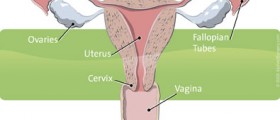
Overview of the Uterus
Uterus is an internal female sex organ located inside the pelvic area. Uterus is divided into 3 distinct parts including the top, middle, and bottom. The top part of the uterus resembles a cupola, and this is where the fallopian tubes reach the uterus coming from the ovaries. In the middle of the uterus is where a fetus is housed during pregnancy. The bottom area is actually the cervix connected to the vagina. Aside from the physical classification, there are a few other parts of the uterus. The wall, for instance, consists of 2 layers of fiber such as the inner and the outer layer. The inner layer covers the wall of the uterus and every month in sexually mature women enlarges to prepare to take in an embryo. If there is no conception that month the inner layer is detached from the wall and discharged in a form of a menstrual period out the woman’s body. The muscle of the uterus makes up its outer layer.
Uterine Cancer in Women
As is the case with any other type of cancer, the cells are the parts where the tumor first starts to grow. As the cell constitute tissue which in turn constitutes organs once the cells are infected the cancer starts to spread from one location in the organ to another, and beyond. During the process of cell division when the cells split in half to form new cell is when the problem begins. Cells usually divide as the old ones die off and new ones are necessary. In case the cells multiply when there is no need or the old cells remain in the body cancer begins to form. The accumulation of the unneeded and the old cells is what actually creates a tumour. The accumulated mass can either be benign, or relatively harmless, or it can be malignant, which is the adverse type of tumour. The characteristics of the benign tumours are that they don’t spread to other organs, are surgically removed from the body and in most cases never appear again, and are usually not life threatening. On the other hand, the malignant tumours do spread to other organs, are surgically removed but are known to come back, and in many cases are life threatening. In addition, the spreading of the cancer cells from one area into another is achieved by detaching from the uterus and traveling either through the lymph system or blood. As both the lymph system and the blood are spread throughout the body cancer cells have access to every organ. Once they find a new place they attach to the wall again and start growing.
Risk Factors for Uterine Cancer
The underlying cause of any type of cancer is in many cases difficult to identify. However, there are numerous risk factors which increase the probability that a person will develop uterine cancer. One such element which is known to predispose women to cancer is unusual enlargement of the inner part of the uterus. As the cells start to multiply more than is necessary there is a strong chance that the woman will get cancer, as was already mentioned. An individual affected by abnormal growth of the inner lining of the uterus suffer from heavy periods and spotting in between periods. The age group which is affected the most are middle aged women. In order to stop the abnormal enlargement and in turn uterine cancer a medical care professionals will advise the individual to take hormonal therapy or to surgically have the uterus removed. As far as the reproductive cycle goes, any individuals who got their first period before 12 years of age, went into menopause after 55, and who had never had children are more prone to developing uterine cancer. In addition, if a woman has been taking estrogen or breast cancer medications for a prolonged period of time there is a possibility of uterine cancer development. As expected, any person who has been exposed to radiation therapy has increased chances of getting cancer. Other risk factors for uterine cancer involve elements which predispose most individuals to all forms of cancer. For instance, women who are overweight have a greater chance to develop uterine cancer compared to those who do not have weight problems. Also, individuals who have a family history of reproductive organs cancer are more likely to develop the same illnesses than the general population. It should be noted that there are instances of women who are at very high risks for uterine cancer but never develop it. Similarly, numerous women who suffer from uterine cancer have never been exposed to any of the known risk factors.
Symptoms of Uterine Cancer
Signs and symptoms of uterine cancer are fairly clear, although in many instances comorbid with other disorders. Pain is the most prominent symptoms and it is usually experienced in the vaginal area. Unusual vaginal bleeding is also frequently present as a sign of cancer. Many women also complain of painful urination.
















Your thoughts on this
Loading...